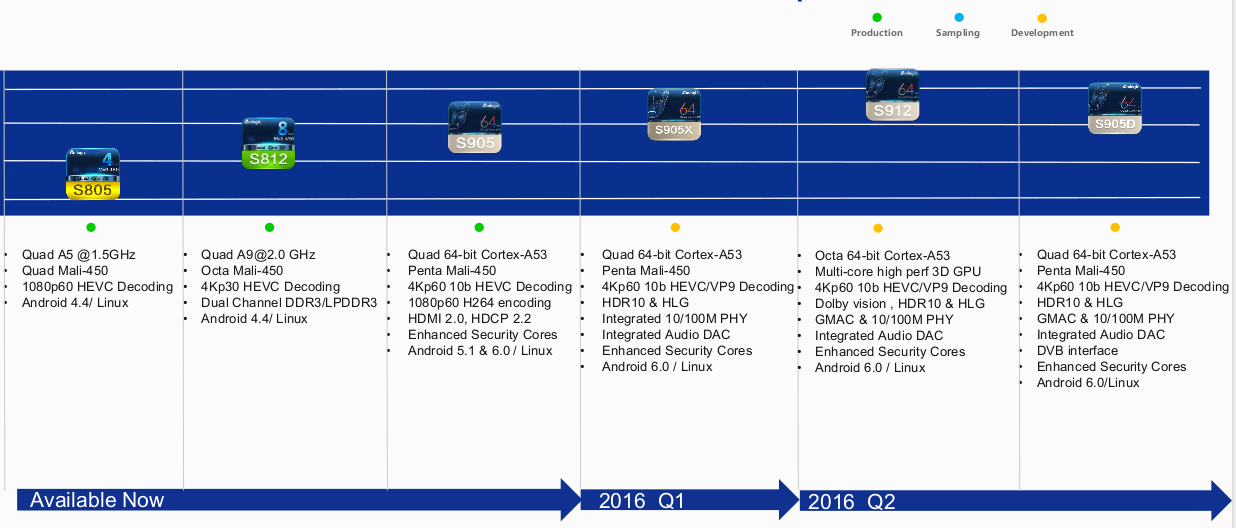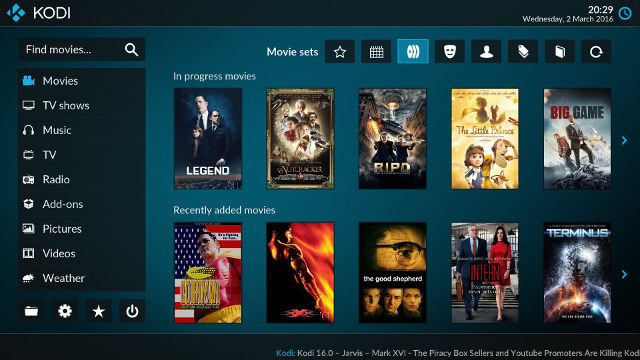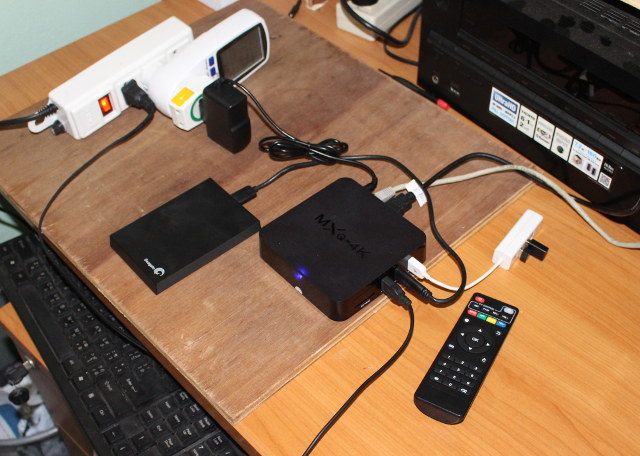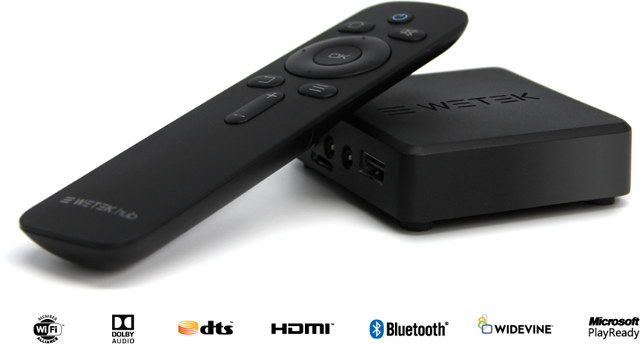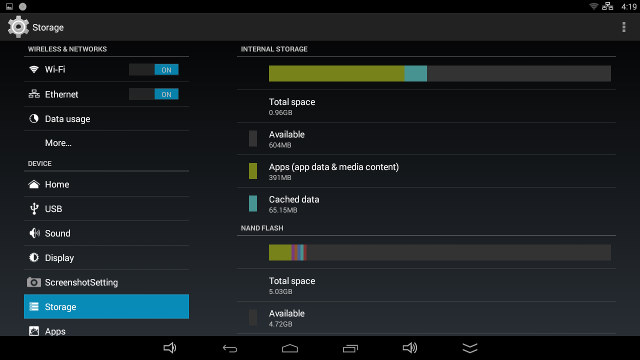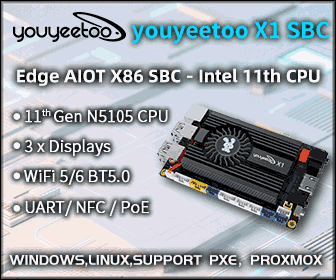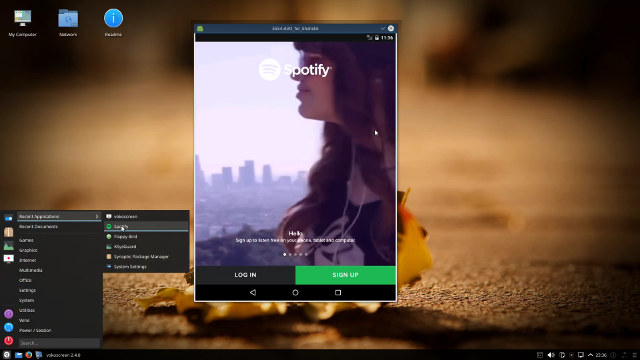Google has just released an early developer preview of Android 7.0 N (Nutella?) before the OS officially launched later this summer with new features such s multi-window support, TV recording, Picture-in-picture, bundled notifications, and efficiency improvements. So let’s have a look at some of improvements: Multi-window – A new manifest attribute called android:resizableActivity is available for apps targeting N and beyond, allowing your activity to be launched in split-screen modes on phones and tablets. In addition, activities can also go into picture-in-picture mode on devices like TVs by setting android:supportsPictureInPicture to true. Direct reply notifications: Initially an Android Wear only features, the RemoteInput notification API has now been added for smartphones and tablets, and allows user to reply directly within the notification shade. Bundled notifications – The Notification.Builder.setGroup() method can be used to bundle notifications from the same app together. Efficiency Improvements – Doze has been further improved to save […]
Amlogic 2016 Roadmap Reveals Upcoming S905D Processor, Android 6.0 for Amlogic S905 and S912 SoCs
A new Amlogic roadmap reveals the company will release at least three new processors this year: Amlogic S905X, Amlogic S912 and Amlogic S905D all based on four to eight ARM Cortex A53 cores, and that Android 6.0 support is coming to Amlogic S905 X/D and S912 processors. Since the processors are in development, there are always some tweaks and new information about the specifications, as now Amlogic S905X and S912 quad and octa core processors will be clocked at 2.0 GHz (instead of just 1.5GHz as previously reported), and S905X will support 2-layer PCB, while all other recent Amlogic processors require 4-layer, which promises some very cheap 4K TV boxes with H.265 and VP9 support. Amlogic S912 will apparently not support USB 3.x since the new document only shows 3x USB 2.0 interfaces for the SoC. Amlogic S905D is similar to S905X except it supports Gigabit Ethernet (RGMII), TS video […]
Meet Estuary and Estouchy, The New Default Skins for Kodi 17 and Beyond
I’ve only known XBMC / Kodi since the open source media center started to show up on ARM based Android and Linux mini PCs around the mid of 2012, and in most devices the default skin called Confluence was used with Kodi/XBMC. It has been used as the default since 2009, and Kodi developers have decided a refresh would be good for Kodi 17 Krypton which will feature two new skins: Estuary for media players and HTPCs, and Estouchy for devices with a touchscreen such as smartphones and tablets. Estuary does away with the horizontal menu found in Confluence, and instead moves the main menu options to the left. Several widgets have also been added for movies and TV including Random, Recently added, In progress and, Random, and similar options are available for Music too. The media library has also changed the way it displays movies and TV show information, […]
10-bit H.264 and H.265 Video Playback in MXQ-4K Rockchip RK3229 TV Box
Rockchip RK3229 is an exciting media processor because it’s found in ultra low cost TV Boxes such as MXQ-4K, outputs up to 4K @ 60 Hz, and supports 4K video decoding of 10-bit H.264, 10-bit H.265 and VP9, including videos with very high bitrates (200+ Mbps). That’s the theory, which I’ve put to the test with MXQ-4K TV box. Since the network interfaces of the device are limited to 100M Ethernet and 802.11n WiFi, and some videos are well above 100 Mbps, I’ve decided to test video playback from a USB hard drive instead. I’ve tried the three pre-installed video player apps: Kodi 15.1, “Video”, and “Video Player” , and they all have similar capabilities except Kodi is a little less stable on this device. The system detected my 4K TV (LG ) and automatically set the resolution to 3840×2160 @ 60 Hz, which I used for the remainder of […]
WeTek Hub Android & OpenELEC TV Box Features Amlogic S905-H Revision C Processor
WeTek has been working not on one, but two four new devices recently. I’ve already covered WeTek Play 2S (previously known as WeTek Play+) based on Amlogic S905 Rev. C , running Android 5.1 or OpenELEC, and featuring digital TV tuners (ATSC, DVB-S2, DVB-T2/C), which should become available in Q2 2016. The company has unveiled another model called WeTek Hub with features closer to the ones found in other Amlogic S905 TV boxes I’ve reviewed so far, except it is based on Amlogic S905-H revision C, comes with Widewine and Microsoft PlayReady DRM, and supports both Android 5.1.1 and OpenELEC. WeTek Hub specifications: SoC – Amlogic S905-H revision C quad core ARM Cortex-A53 @ up to 2.0GHz with penta-core Mali-450MP GPU @ 750 MHz System Memory – 1 GB DDR3 Storage – 8 GB eMMC flash + micro SD card slot Video & Audio Output – HDMI 2.0 up to […]
How to Resize Partitions and Update Firmware in MXQ-4K TV Box (Rockchip RK3229)
Since I’ve received MXQ-4K Android TV box yesterday, I have started to play with it, and so far I can’t say I’m impressed, as while the device automatically detected the maximum resolution (3840×2160 @ 60 Hz) for my television, I could not play any of my 4K samples smoothly with either the pre-installed Kodi 15.2, Video and Video Player apps, there’s no power off mode (only standby), and the “internal partition” is only 0.96GB large which can quickly become an issue if you plan on installing several apps. Since GeekBuying has released the stock firmware, I decided to try to adapt the method to resize the partitions for GeekBox (RK3368) to MXQ-4K. Rockchip RK3229 Firmware Modding I’ve used a computer running Ubuntu 14.04, and assume you have most tools pre-installed. The first step is to download the firmware (MXQ-4K_ota_ok_20160127.img update.img), and install the tools to extract it :
|
1 2 3 4 |
git clone https://github.com/geekboxzone/utils cd utils/rockdev mv MXQ-4K_ota_ok_20160127.img update.img ./unpack.sh |
The […]
Run Android Apps in Linux with Shashlik Android Emulation Layer
There are already ways to run Android apps in Linux distributions such as Ubuntu or Debian, including the Android SDK emulator, running Android-x86 or Remix OS in a virtual machine, or using Genymotion, but those solutions are a little cumbersome to setup. Shashlik Android emulation layer aims to simplify the process of running Android apps in their own window within Linux desktop distributions. The Android apps can be started from the start up menu or dash like any Linux program. The apps are currently running inside an emulator so you actually boot a stripped down version of Android each time you start the app, which means they’ll take a little while to start. OpenGL and graphics are all rendered on the host for better performance. In the future, the emulator (virtual machine) may be dropped, and instead Shashlik could simply become a container, which requires rewriting libbinder in userspace There […]
$61 Xiaomi Mi Box 3 2016 Enhanced Edition is Powered by Mediatek MT8693 Hexa-core Cortex A72 + A53 Processor
There are few ARM Cortex-A72 “class” mini PCs available on the market, and the only one I can think of is Amazon Fire TV 2015, powered by Mediatek MT8173 hexa-core processor, and priced decently at $99.99, but hard or expensive to source if you don’t live in the US. There will soon be one more choice, as Xiaomi has upgraded its Mi Box 3 to use Mediatek MT8693 processor with two Cortex-A72 cores, and four Cortex-A53 cores combined with PowerVR GX6250 GPU. Xiaomi Mi Box 3 Enhanced / 2016 Edition specifications: SoC – Mediatek MT8693 hexa-core processor with two Cortex-A72 cores @ 2.0GHz, four Cortex-A53 cores @ 1.6 GHz, and Imagination PowerVR GX6250 GPU System Memory – 2GB 64-bit LPDDR3 memory Storage – 8GB eMMC 5.0 flash Video Output – HDMI 2.0 up to 4K/2160p @ 60 Hz Video and Audio Features – 10-bit H.265, Dolby and DTS audio Connectivity […]



